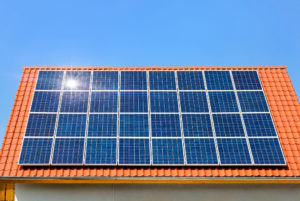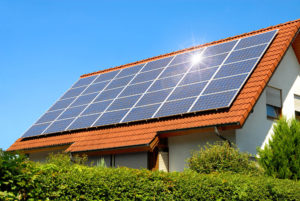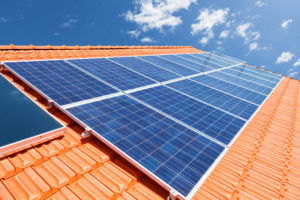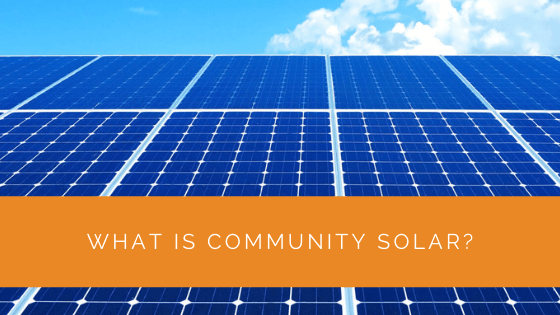As we strive towards a more sustainable future, understanding and embracing community solar becomes increasingly vital. This groundbreaking concept offers a collective approach to solar energy, where a large central solar power plant is shared by numerous participants, such as households or businesses. It’s an innovative solution that democratizes access to solar power, allowing those without suitable conditions for individual installations to still benefit from solar energy. This article dives into the essence of community solar, exploring its mechanics, benefits, and comparing it with traditional rooftop solar options, to guide you in making an informed choice in your renewable energy journey.
Contents
- 1 Key Takeaways
- 2 What Is Community Solar?
- 3 How Does Community Solar Work?
- 4 Benefits Of Community Solar
- 5 Community Solar vs. Rooftop Solar Panels: Which Model Of Solar Energy Should You Use?
- 6 Case Study: Community Solar Implementation
- 7 Project Overview
- 8 Implementation
- 9 Expert Insights From Our Solar Panel Installers About Community Solar
- 10 Experience Solar Excellence with Us!
- 11 Wrapping Up
Key Takeaways
- Community solar allows multiple households to access solar power from a central solar plant, regardless of rooftop suitability, making it an environmentally friendly and cost-effective option.
- Community solar programs offer ownership-based and subscription-based models, providing participants with choices for solar energy access.
- Benefits of community solar include suitability for renters, no impact on home aesthetics, hassle-free relocation, reduced maintenance, cost savings, and lower electricity bills through virtual net metering. Choosing between community and rooftop solar depends on factors like accessibility, logistics, finances, and environmental impact.
What Is Community Solar?
A community solar project is a vast, central solar power plant. Multiple properties share the power produced by such plants, say hundreds or even thousands of households.
These programs are voluntary, and the participants enjoy the benefits of solar power without heavy investment.
In residential solar installations, the size is measured in kilowatts. However, in community solar installations, projects are mentioned in megawatts.
Community solar access enables the consumers to participate and benefit directly from the installation of renewable energy assets. It also bolsters the involvement of a diverse customer base in clean energy projects.
How Does Community Solar Work?
Community solar programs can be modeled in two different formats; ownership or subscription.
Ownership-Based Community Solar Projects
Under an ownership-based community solar project, participants purchase either a portion of the solar project or a selected number of panels.
This community solar model is quite similar to the rooftop system, except there is no need for installing solar panels or your own system on your property. Instead, you become the owner of some panels in the community solar array or a fixed number of kilowatts of the project’s total capacity.
You can purchase only the shares you require to meet your household electricity usage. The actual output of the solar project will be credited to your electricity bill.
Subscription-Based Community Solar Projects
Community solar subscription models allow participants to subscribe to the project instead of owning panels or a share of the community solar project.
Most community solar programs are based on this model. While the exact terms vary from project to project, in most cases, you need to pay a joining fee upfront, and you can save money on your electric bill right away.
In a subscription-based community solar program, you purchase your electricity at a lower rate compared to your electricity bills from the grid. Based on your community solar provider, you might have to live within a specified radius of the community solar garden.
Many community solar companies restrict the amount of electricity you can receive from the system. These programs are typically easy to sign up for and cancel.

Benefits Of Community Solar
Time and again, we’ve discussed the benefits of using clean electricity. We know that with solar energy, we can reduce carbon emissions and do our bit towards nature.
The solar industry makes a big part of the renewable energy industry, and community solar is an excellent development for the environment and economy.
Let us look at some of the benefits that community solar customers receive.
No Rooftop Restrictions
A significant number of American households are found to be unsuitable for rooftop solar installations.
The primary reasons behind their unsuitability are:
- Lack of required roof space
- Shaded roof space
- Roofs are not oriented towards the south.
When you install solar panels in a community project, all of these drawbacks are accounted for in a way that maximizes the solar energy produced.
Ideal For Renters
Renters are often unable to reap the advantages of renewable energy sources.
One of the prerequisites of participating in solar energy projects is owning a property. As a result, renters are unable to switch to clean energy sources.
With community solar projects, even renters can participate in the system and save money on their electric bills.
Doesn’t Affect Your Home’s Aesthetic
Not everyone likes the look of rooftop solar panels. But don’t worry—you don’t need to install solar panels if you believe it will affect the aesthetic of your house.
You can still use solar energy from the community solar access. It will enable you to reduce your electric bill while keeping your property’s look intact.
Reasonable Option If You’re Planning To Relocate
If you’re planning to move to a new property or sell your home, joining local solar facilities is a perfect alternative to rooftop solar installations.
It is completely hassle-free. Moreover, if you move within the service territory of your electric utility company (typically the larger, investor owned utilities), you get the option of transferring your solar share to your new property.
Even if you’re moving far away, you might be able to sell your share to someone else.
Doesn’t Require Maintenance
When you join a community solar program, you don’t have to worry about maintaining the solar panels.
Most local solar facilities shared by so many households are covered by warranty. In rare cases when there are issues, a specialist staff member will save you the time and effort of getting the concern resolved.

Reduced Costs Due To Economies Of Scale
Cost savings are perhaps one of the most attractive benefits of community solar programs.
The principle of economies of scale applies to solar energy too. Therefore, the larger the solar installation, the lower is the cost per watt.
Large community solar projects can achieve much lower setup costs than small home installations.
Depending on the effectiveness of the project, homeowners may find community solar more affordable than installing their own solar systems.
Lower Electricity Bill Due To Virtual Net Metering
Virtual net metering is a system for community solar and works much like standard net metering.
Under regular net metering, a household’s solar panel system sends the excess solar energy into the electric grid. The homeowners receive credits on their utility bill for every kilowatt-hour of solar energy fed into the grid.
In virtual net metering, multiple community solar subscribers receive credits on their monthly electric bill for the power fed to the grid by the solar farm.
Community Solar vs. Rooftop Solar Panels: Which Model Of Solar Energy Should You Use?
Let us compare community solar farms and rooftop solar systems on different parameters to see which is one is more suited in different situations.
Accessibility
Community solar can expand solar access to multiple community subscribers. However, only homeowners can reap the benefits of the electricity generated via rooftop panels.
It only makes sense to install solar panels if you plan on staying in the same residence for a few years. An affordable community solar garden will be a better fit if you’re looking for a short-term arrangement.
Lastly, if your roof size is not suitable for solar panels, you should enter community solar.
Logistics
When you sign up for a rooftop installation, there are many formalities that you need to fulfill. You also have to deal with any maintenance issues that arise.
In community solar, signing up is very easy, and you do not have to worry about any maintenance. However, you need to keep track of two bills in community solar but only one in a rooftop installation.
Finances
Installing panels on your rooftop is quite expensive, and you have to incur high upfront costs. On the contrary, you can join such a solar community for free and receive credit, bill savings, and other customer benefits immediately. Even people from underserved communities can enjoy renewable energy.
While community solar doesn’t affect your home’s looks or value, rooftop installations increase the property’s value. Moreover, rooftop systems bring tax-related advantages, which community solar does not.
You will receive monthly savings with community solar, whereas a rooftop system maximizes long-term savings. Although there will potentially be ongoing costs in the case of rooftop panels, no such costs arise in community solar.

Environmental Impact
Both rooftop and community solar add solar power to your energy system. However, community solar impacts local lands.
While the power generated from a rooftop installation only cuts off your property from fossil fuels, community solar offsets emissions from the entire solar community of hundreds of households. In terms of climate change, community solar has a clear advantage.
In both cases, you’re embracing a renewable energy source, and that is wonderful for the planet.
Case Study: Community Solar Implementation
Background
In a bid to promote sustainable energy practices and reduce dependence on fossil fuels, a community in Kentucky decided to embark on a community solar project. This initiative aimed to make solar energy accessible to residents who couldn’t install individual solar panels on their properties due to various constraints, such as unsuitable rooftops or rental agreements.
Project Overview
The project involved the construction of a 2-megawatt community solar farm on a previously unused plot of land near the town’s outskirts. This solar farm was designed to serve approximately 500 households, providing them with clean, renewable energy at a reduced cost. Solar Panels Network USA spearheaded the initiative in partnership with local authorities and environmental organizations.
Implementation
The implementation phase began with a thorough site assessment to ensure optimal solar exposure and minimal environmental impact. The chosen site was cleared and prepared, with minimal disruption to the surrounding ecosystem. High-efficiency solar panels were installed, and the system was connected to the local power grid.
Two models were offered to the community members: an ownership-based model where participants could buy a share of the solar panels, and a subscription-based model allowing participants to purchase electricity at a lower rate. The subscription model was particularly popular among renters and those looking for short-term solutions.
Solar Panels Network USA conducted several informational sessions and workshops to educate the community about the benefits and logistics of participating in the community solar project. This outreach helped in achieving a high enrollment rate and fostered a sense of communal participation and investment in the project.
Results
The community solar project in Kentucky yielded significant positive outcomes. Within the first few months of operation, participants reported a noticeable reduction in their electricity bills. The project also demonstrated the potential for large-scale renewable energy adoption in similar communities.
Key results included:
- Cost Savings: Households saw an average reduction of 15-20% in their monthly electricity bills.
- Environmental Impact: The solar farm generated enough clean energy to offset approximately 2,000 tons of CO2 annually, equivalent to planting 50,000 trees.
- Community Engagement: The project fostered a strong sense of community involvement and environmental stewardship among participants.
Summary
The community solar project in Kentucky stands as a successful example of how renewable energy can be democratized and made accessible to a broader audience. By leveraging a central solar farm, the project provided significant cost savings and environmental benefits to hundreds of households. The initiative also highlighted the importance of community engagement and education in the adoption of sustainable energy solutions.
As Kentucky continues to explore and expand its renewable energy initiatives, this community solar project serves as a model for future endeavors. The collaboration between Solar Panels Network USA, local authorities, and the community has paved the way for a more sustainable and inclusive approach to energy consumption, demonstrating the potential of community solar projects to transform energy landscapes across the region.
Expert Insights From Our Solar Panel Installers About Community Solar
Community solar is a game-changer for those who can’t install panels on their rooftops. It allows homeowners and renters alike to benefit from solar energy without the need for personal installations. This inclusivity makes solar power accessible to a much broader audience.
One of the biggest advantages of community solar is the reduced maintenance responsibility for participants. The solar farm operator handles all upkeep, which means participants can enjoy the benefits of solar energy without worrying about the technical aspects.
Community solar projects provide a fantastic way to support renewable energy growth in your local area. By participating, you’re contributing to a larger, shared effort to reduce carbon emissions and promote sustainability in your community.
Experience Solar Excellence with Us!
Trust in Solar Panels Network USA, where our seasoned experts deliver top-quality solar solutions for homes and businesses nationwide. With a legacy of countless successful installations and a commitment to sustainable energy, we’re your reliable partner in the solar journey. Ready for a brighter, eco-friendly future? Call us now at (855) 427-0058 and harness the power of the sun!
Wrapping Up
Community solar refers to a system wherein multiple households in a community can access a single solar farm for their energy needs.
Such programs have emerged as a way to promote the use of cleaner energy sources without incurring high costs.
Depending on your needs and conditions, you can determine which system suits you better; rooftop or community solar.
If you’re still not using renewable energy and are hesitant to install huge structures on your roof, you should check out community solar programs in your area.
About the Author
Solar Panels Network USA stands at the forefront of solar energy solutions, driven by a team of seasoned solar engineers and energy consultants. With over decades of experience in delivering high-quality solar installations and maintenance, we are committed to promoting sustainable energy through customer-centric, tailored solutions. Our articles reflect this commitment, crafted collaboratively by experts to provide accurate, up-to-date insights into solar technology, ensuring our readers are well-informed and empowered in their solar energy decisions.

